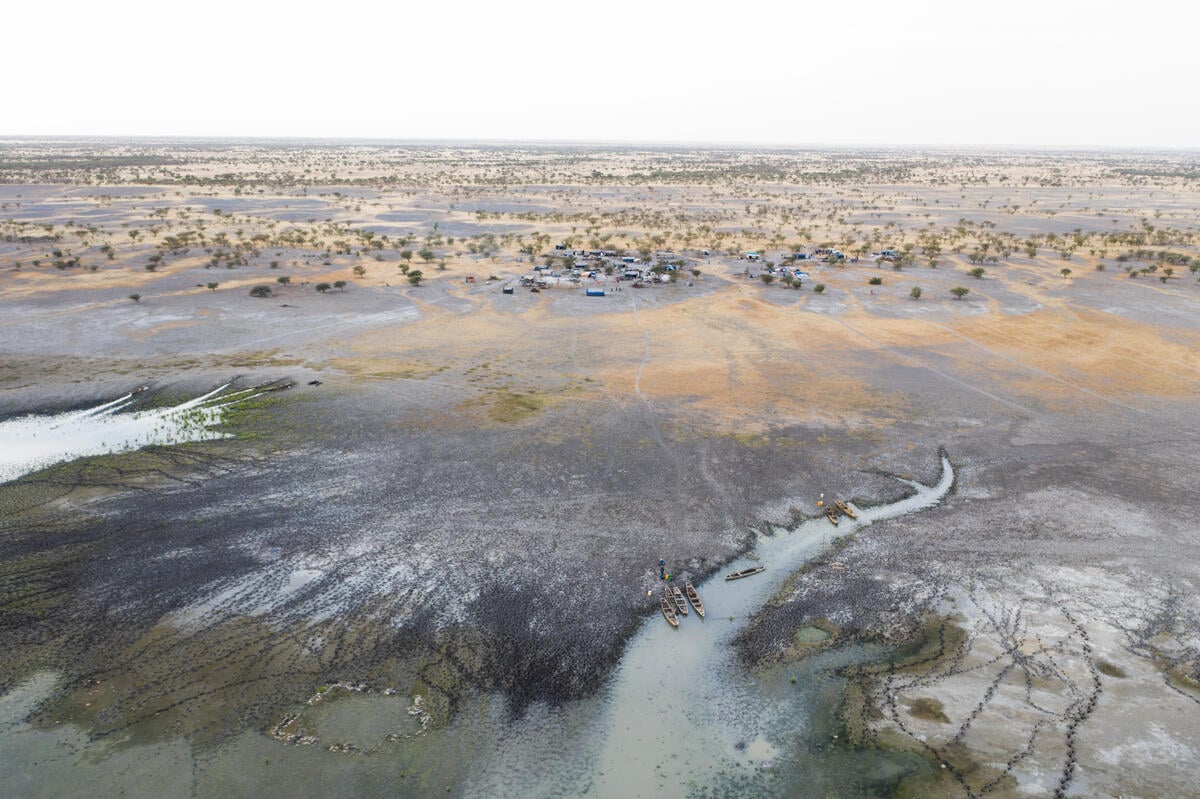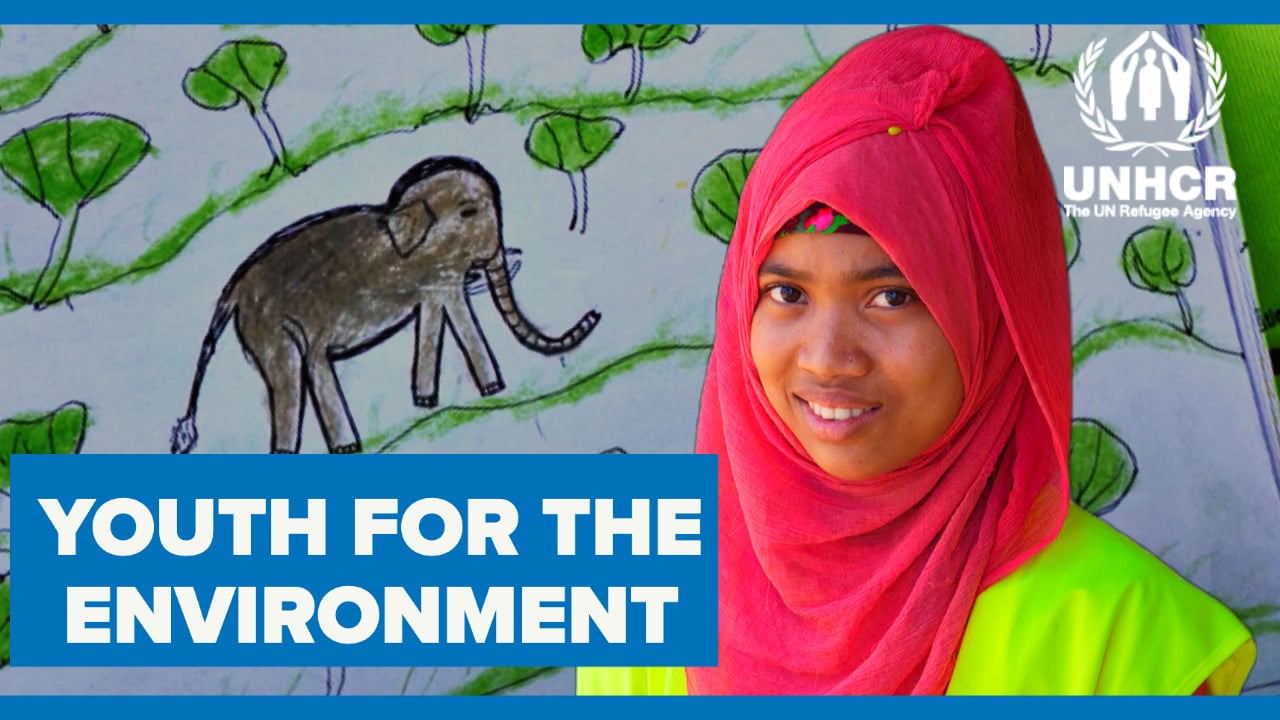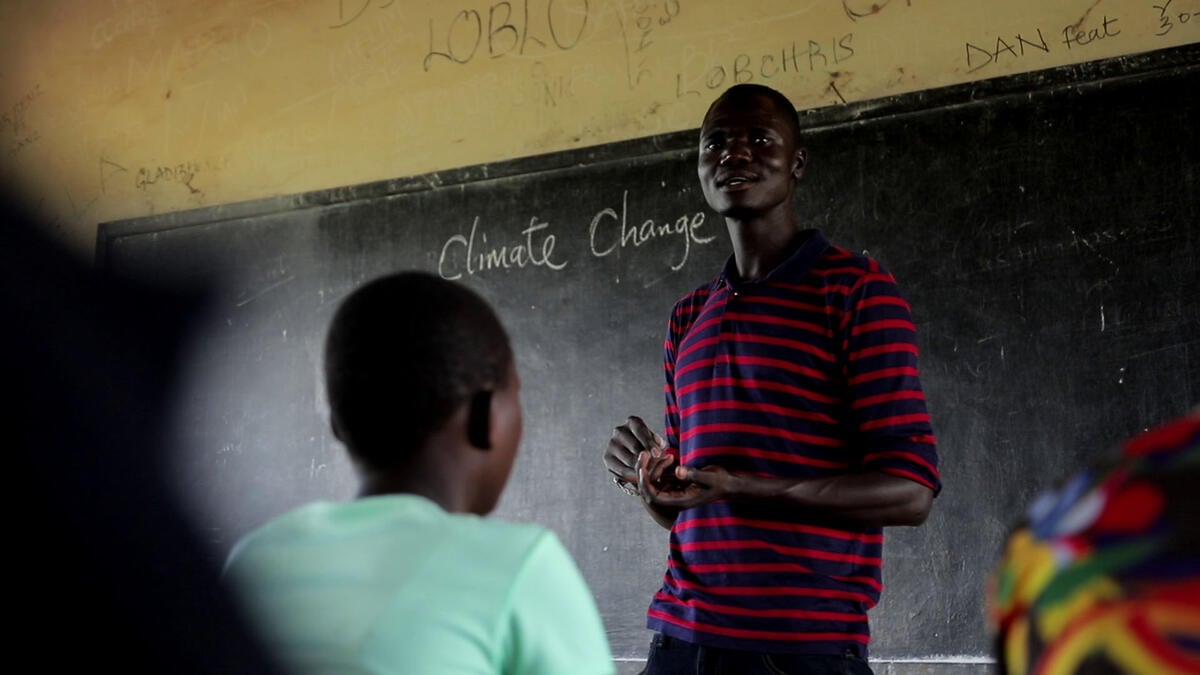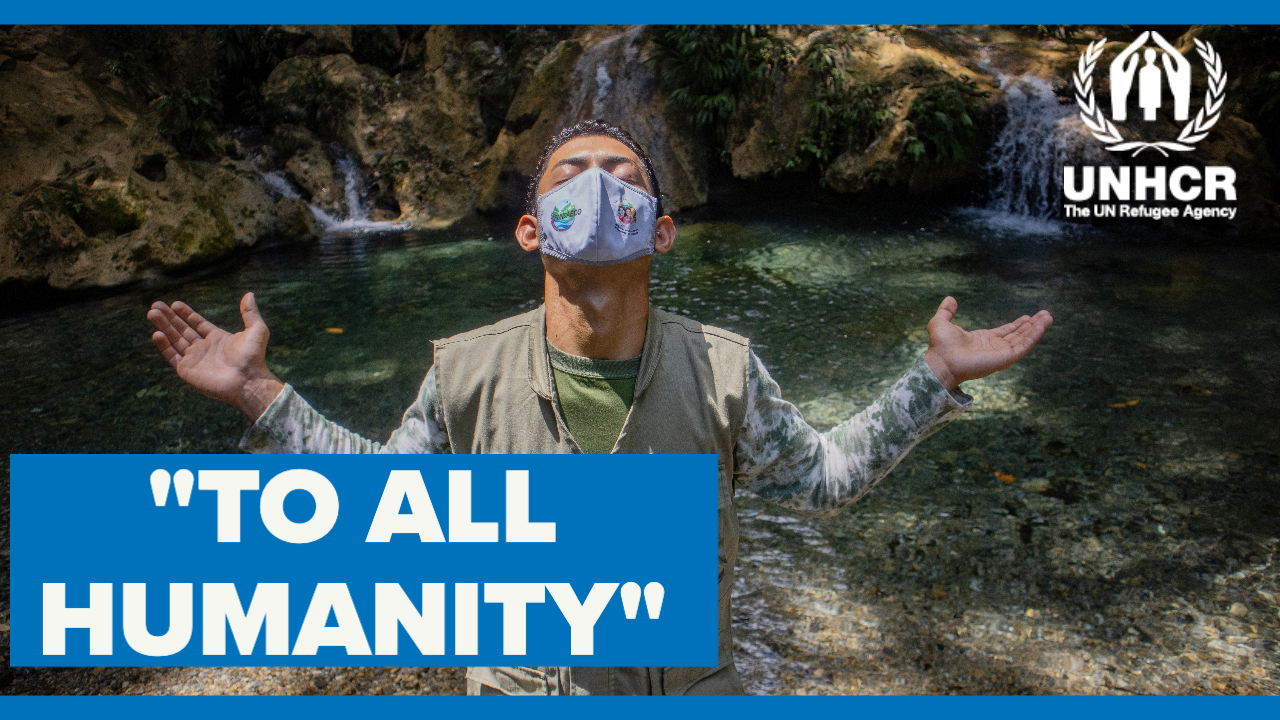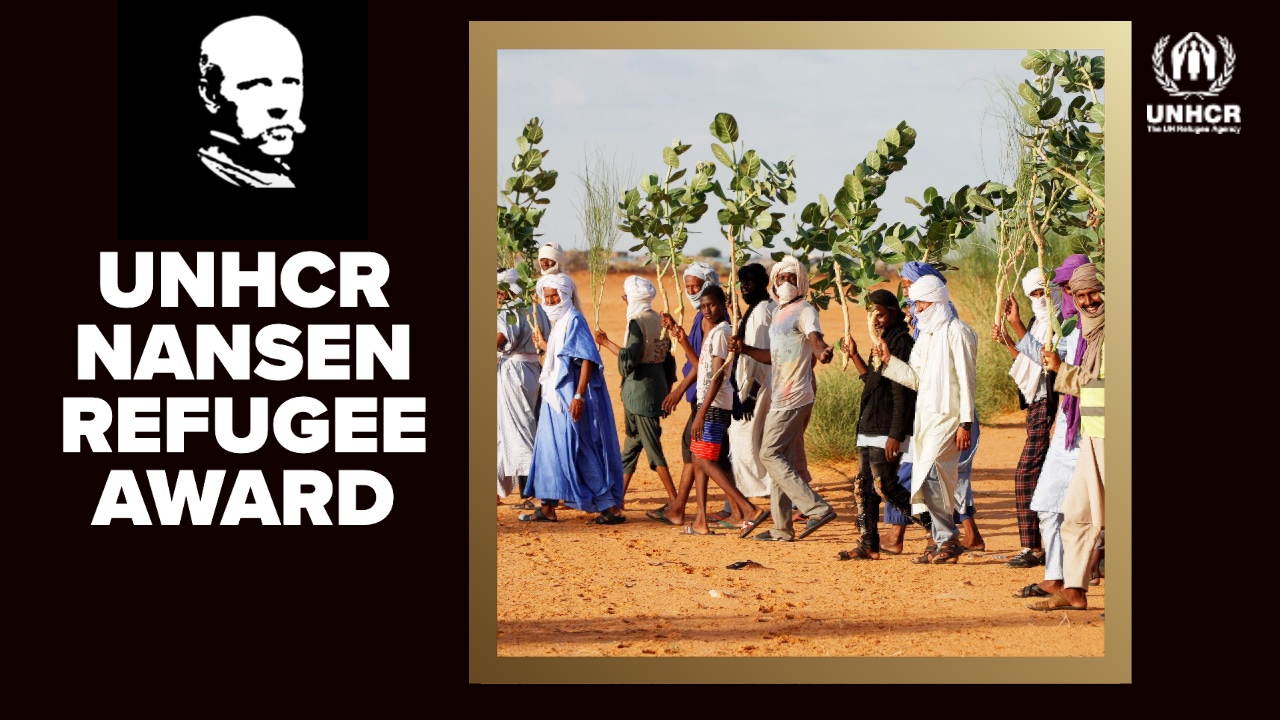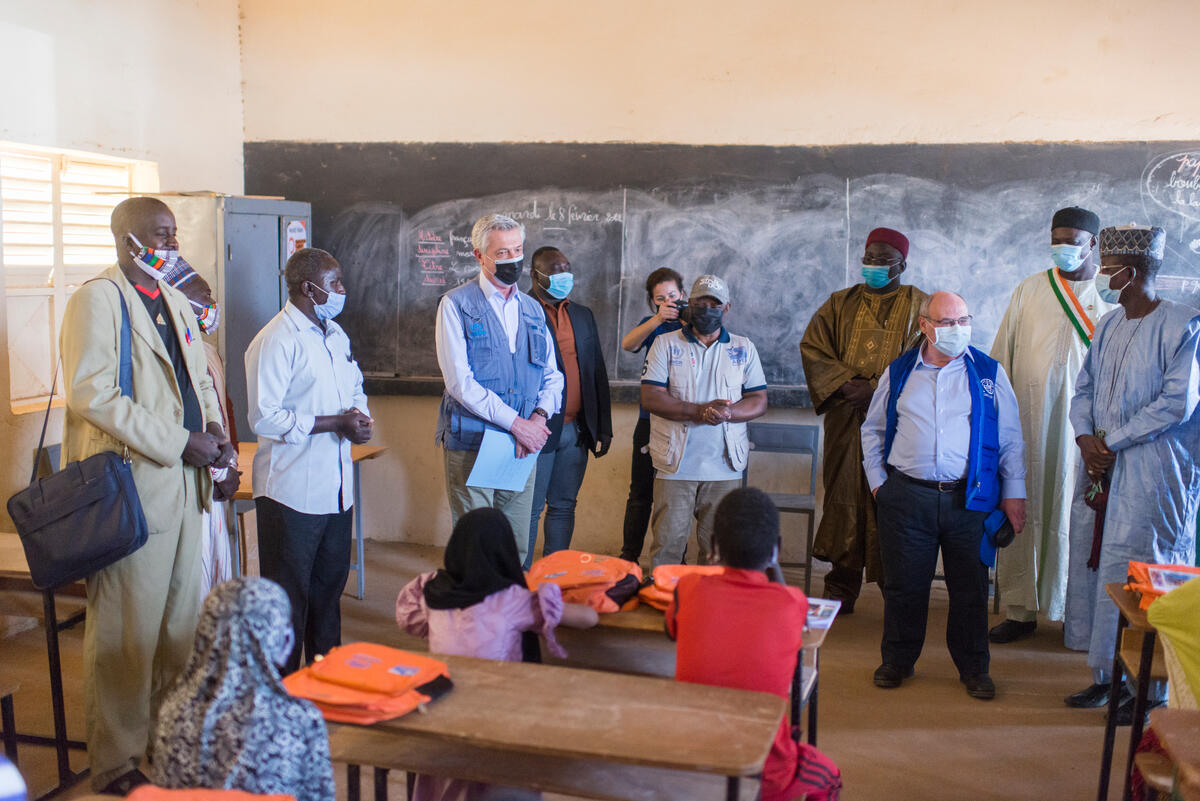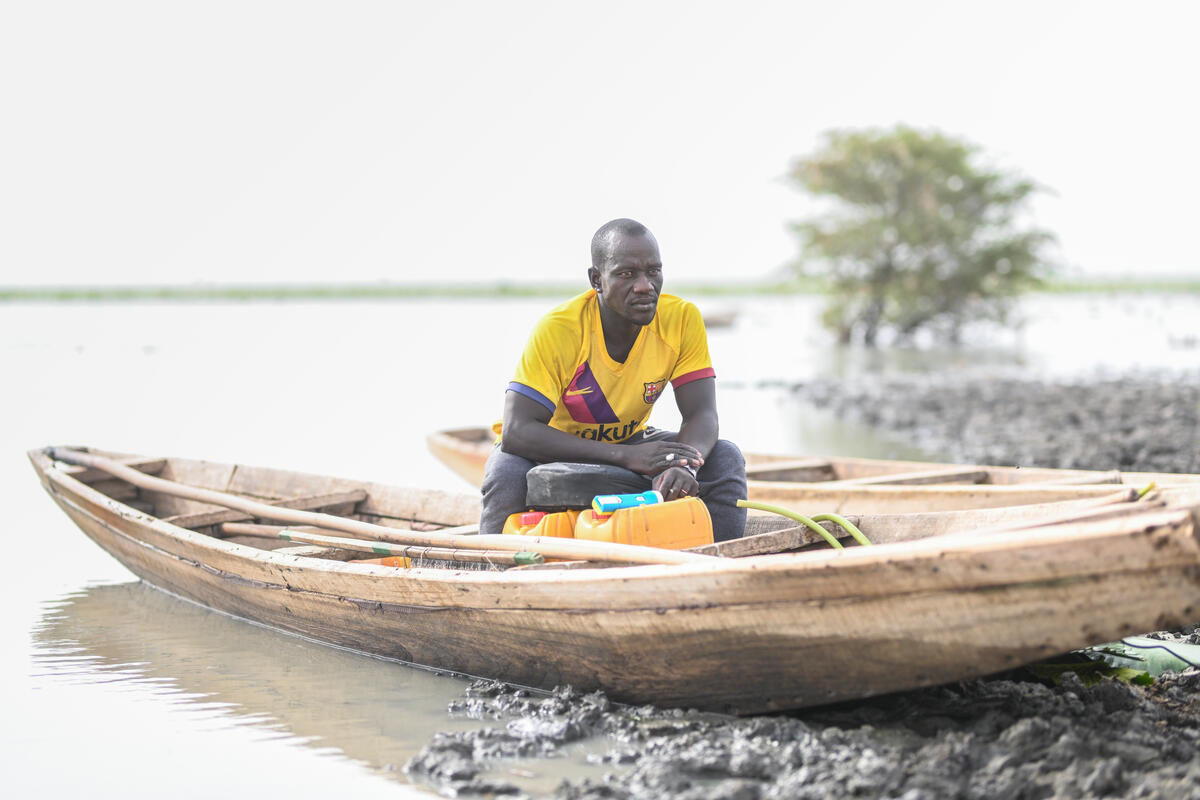World Environment Day: Putting refugee protection first pays dividends for the environment in Bangladesh
World Environment Day: Putting refugee protection first pays dividends for the environment in Bangladesh

NAYAPARA REFUGEE CAMP, Bangladesh, June 4 (UNHCR) - Little Noor Sumi, a smiling three-year-old who usually runs around the house naked, loves to cuddle up to her mother as she prepares lunch. For years, Hosan Jamal worried about Noor and her other children falling into an open flame and vigilantly shooed them away as she cooked.
These days, though, she prepares meals on a special closed ceramic eco-stove using alternative fuel - compressed rice husks. In addition to the environmental advantages, she's thrilled that there's now no fire hazard.
"The main advantage is if you use compressed rice husks, no flame comes out and it produces a much higher heat," Hosan says, busily preparing pans to place on the stove's two burners.
A hallmark of the refugees' old low-roofed blackened one-room shelters was the intense indoor pollution. "Sometimes my eyes were burning, tears were flowing, my whole house became smoky and all the children suffered," recalls 31-year-old Hosan, a mother of six.
As UNHCR replaced most of the housing for the 28,000 Muslim Rohingya refugees from Myanmar in two refugee camps in Bangladesh over the last three years, the refugee agency also provided energy-efficient stoves for those who wanted them - about half the population. The agency also provided training in how to use the stoves.
This was one of a range of environmentally-friendly efforts taken in the two camps in recent years, including collecting rainwater for communal latrines and household use, backyard gardening, a biogas plant to convert latrine waste into cooking gas for communal kitchens, and using solar lighting to protect females against harassment while using bathrooms and latrines.
"People all around the planet are marking World Environment Day on June 5," noted Jean-François Durieux, UNHCR's director of programme support, who heads the agency's environmental programmes. "But in our operations in more than 100 countries, UNHCR is concerned about the environment every day."
UNHCR is marking World Environment Day with an exhibition in Geneva of some successful practices in its operations worldwide. In Ethiopia, refugees will take part in community tree-planting and clean-up campaigns and at Girba Refugee Camp in eastern Sudan, refugees will take part in a special television and radio broadcast about conservation.
In Bangladesh, protection of refugees and of the environment is inextricably linked. In fact, many measures designed primarily to protect refugees - the solar lighting and replacing firewood with compressed rice husks to cut down on the hazards of going out of the camp to collect firewood - added up to elements of an environmental protection strategy.
"For decades, UNHCR has recognized that the presence of refugees and internally displaced people can damage the environment, particularly if large numbers gather for a long time in an ecologically fragile area," noted Durieux, speaking of many situations around the world.
For this reason, UNHCR supports the planting and care of more than 10 million trees around the world every year, as well as many other activities. In Chad, Sudan and Nepal, for example, UNHCR promotes the use of renewable energy in the form of solar lighting and cookers in refugee camps.
Here in Nayapara Camp, south of Cox's Bazar, two rainwater harvesting systems have been built in the last two years to tide the camp's 17,000 residents over the dry season. The water is used for latrines, showers and washing clothes. In Nayapara and nearby Kutupalong Camp, home to another 11,000 refugees, 143 solar lights have been installed, not only cutting down on sexual harassment of women, but also warding off marauding wild elephants, who have killed refugees in the past.
Refugees are adding their own efforts with backyard gardens and growing varieties of pumpkins on vines that cover the roofs of their sheds. These keep their homes cooler in the blistering heat, provide extra nutrition and lend a greener ambience to the dusty camp.
Some operations around the world do better than others, Durieux admitted, depending on climatic conditions, the fragility of the environment and whether refugees are allowed to venture outside camps to plant trees and crops.
"What is impressive in Bangladesh is that a lot has been done to involve the refugees [in looking after the environment]," he said, adding: "In Bangladesh they are doing a lot for themselves."
By Kitty McKinsey in Nayapara Refuge Camp, Bangladesh

